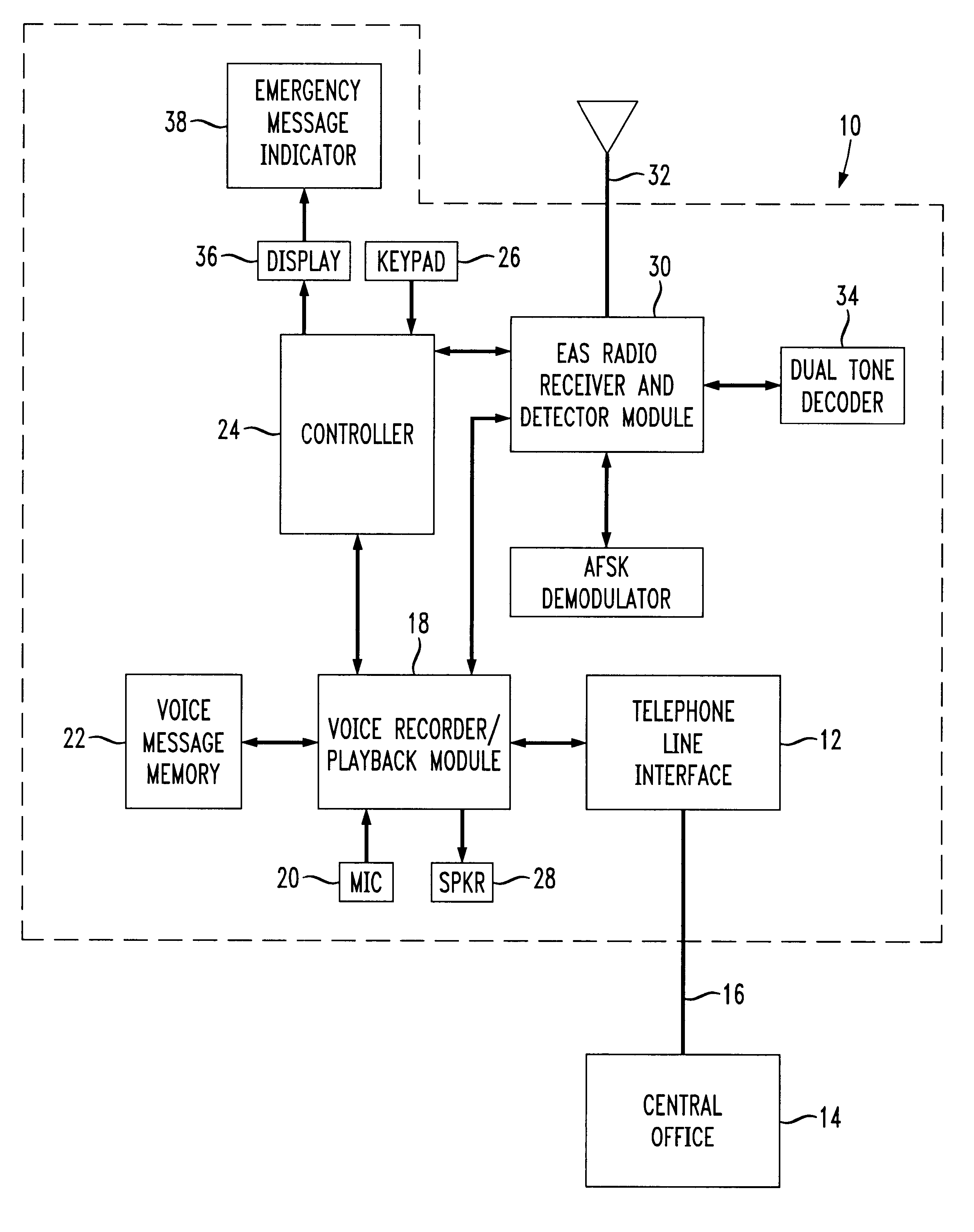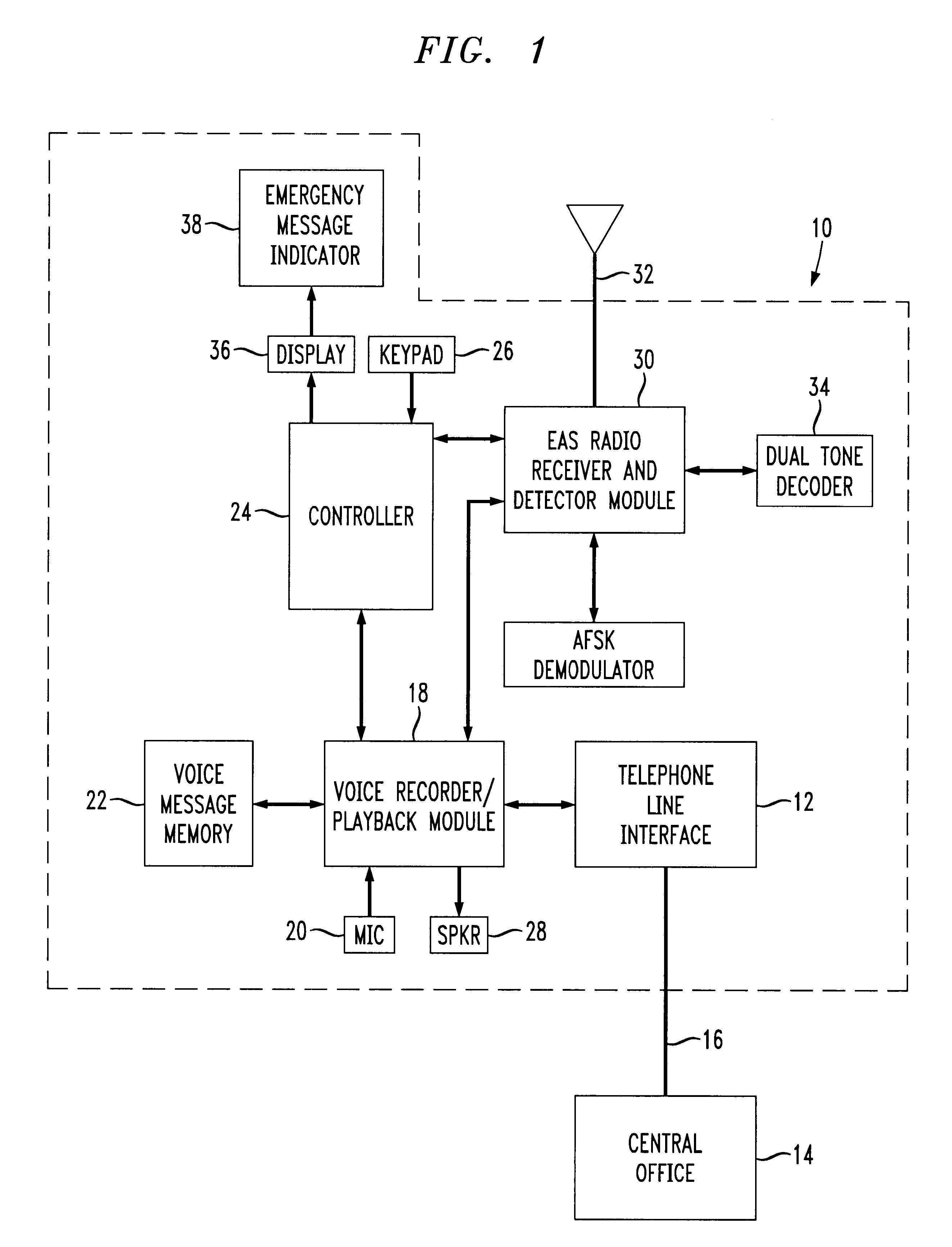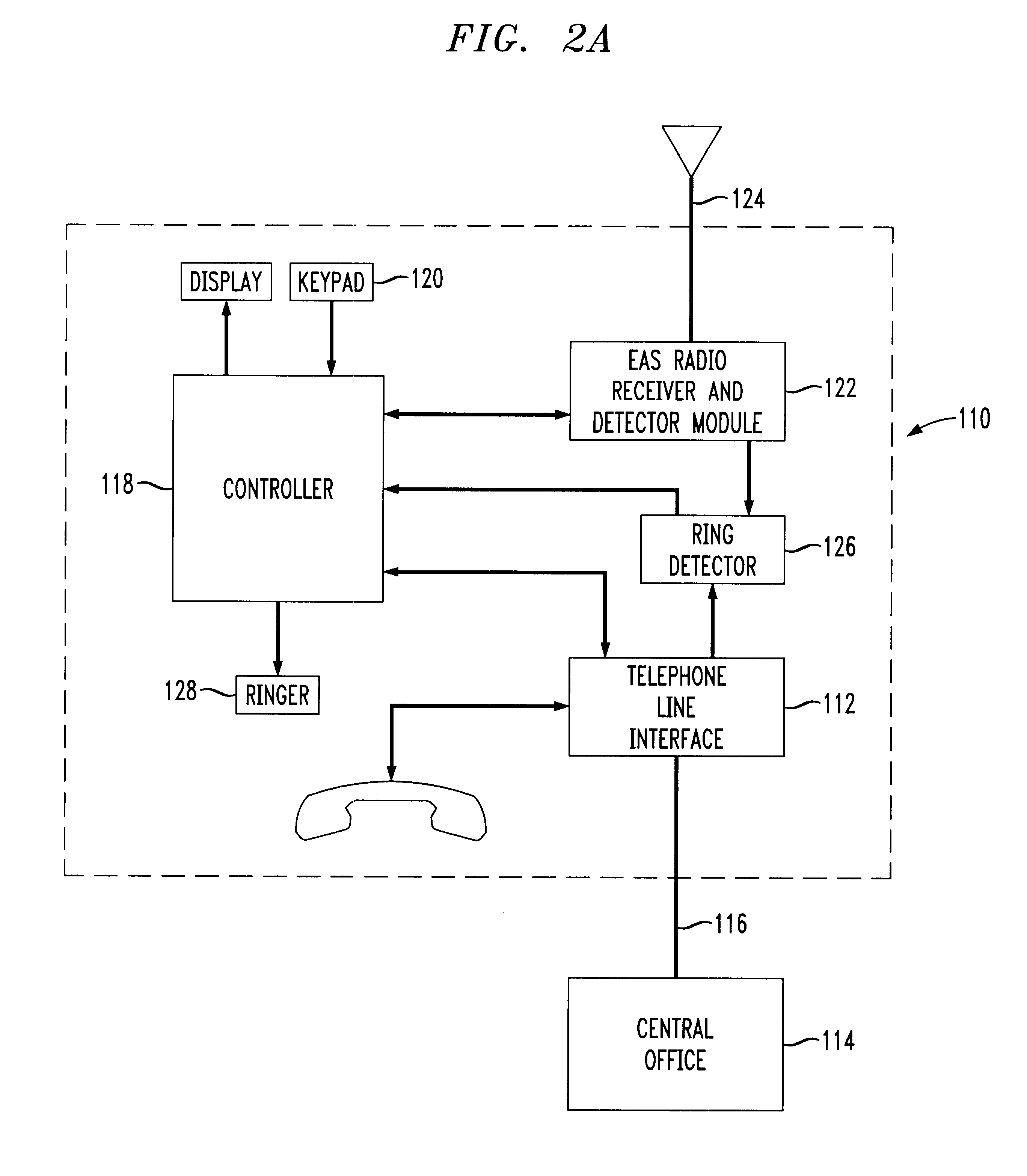Voice messaging system storage of emergency alert system warnings
- Summary
- Abstract
- Description
- Claims
- Application Information
AI Technical Summary
Problems solved by technology
Method used
Image
Examples
Embodiment Construction
The present invention provides a telephone answering device and method for receiving and recording Emergency Alert System warnings. The telephone answering device in accordance with one aspect of the present invention includes a radio receiver and an Emergency detector and decoder. An Emergency Alert system warning message is detected and decoded, and the audio portion of the warning is recorded as a voice message on the telephone answering device. In other embodiments, the audio portion of the Emergency Alert system warning message may be played from the receiver or speaker of an otherwise ordinary telephone not including a voice messaging system.
The invention may also be practiced in non-voice messaging devices. For instance, in such a non-voice messaging device, when an Emergency Alert System warning is received it may initiate an emulated telephone call with a ring signal to the ringer of the telephone answering device. Then, when the telephone device is answered, the audio port...
PUM
 Login to View More
Login to View More Abstract
Description
Claims
Application Information
 Login to View More
Login to View More - R&D
- Intellectual Property
- Life Sciences
- Materials
- Tech Scout
- Unparalleled Data Quality
- Higher Quality Content
- 60% Fewer Hallucinations
Browse by: Latest US Patents, China's latest patents, Technical Efficacy Thesaurus, Application Domain, Technology Topic, Popular Technical Reports.
© 2025 PatSnap. All rights reserved.Legal|Privacy policy|Modern Slavery Act Transparency Statement|Sitemap|About US| Contact US: help@patsnap.com



